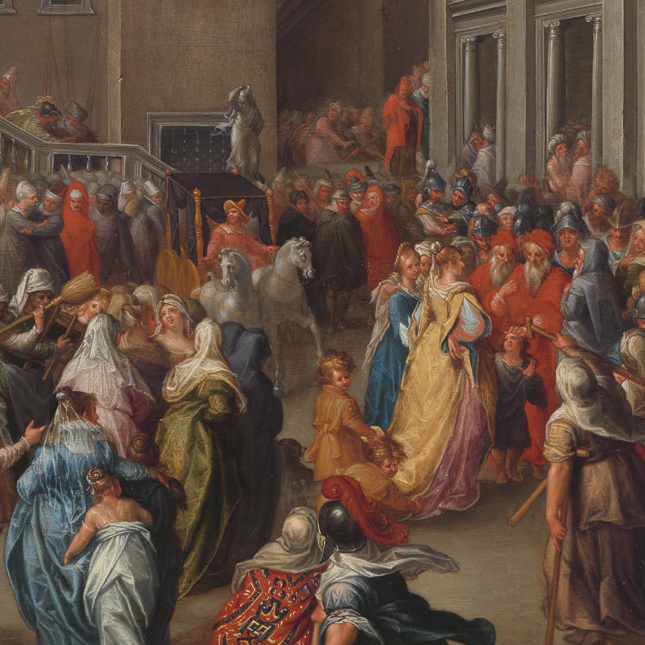Portraying Women in Revolt:
How Pieter Isaacsz Represented the Myth of Papirius and the Uprising of the Women of Rome
DOI:
https://doi.org/10.52476/trb.19304Abstract
The present article analyses the painting The Uprising of the Women of Rome on the Capitol by the Dutch-Danish painter Pieter Isaacsz (1569-1625). This work depicts the mythical story of the Roman boy Papirius, who, after attending a meeting of the Roman Senate, lied to his inquisitive mother to safeguard political secrets, falsely telling her that the senators were deliberating the introduction of systematic bigamy. Enraged, his mother then marched to the Capitol, leading a crowd of elite married women in protest. In the (limited) visual tradition of this classical story, it is always the boy – and therefore, the sound and sensible political actions of men – who takes centre stage, set against the foolish and rebellious behaviour of the women. Isaacsz painted this obscure story twice, approximately ten years apart. The paintings differ in composition and style, but especially in the second painting, the women – not Papirius – have assumed the leading role. In Uprising of the Women, we see the women entering the Capitol in protest: they are in the foreground, with all men relegated to the margins. Based on an analysis of the literary tradition and representation of the Papirius myth, the painter’s sources of inspiration and a comparison of the two paintings, we investigate why Isaacsz chose to place the protesting women in the foreground of his later, Amsterdam painting, thus turning the spotlight on female agency.
Downloads







